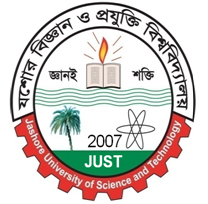Patients’ Perception-centric Health and Wellbeing Impact Assessment of Mistreatment Experienced from the Private Clinics: A Study in Khulna Division
Healthcare is one of the basic human needs, which is also a part of United Nation’s Sustainability Development Goals (SDGs). According to UN resolution, ensuring healthcare and well-being for everyone is one of the SDGs which needs to be accomplished by 2030. So, it is the responsibility of the government and the private sector to work hand in hand to ensure the fulfilment of the health needs of the general population. Bangladesh, a country of 160 million people, is marked with a diverse infrastructure of the public and private healthcare systems (Sattar, 2021; Mohiuddin, 2020). During the last two decades, the private healthcare system has evolved along with the public healthcare system. Of the total 16,979 private sector healthcare institutions, private hospitals constitute 26.22% (4452), private medical clinics’ share is 8.23% (1397), and private dental clinics constitute 4.99% (839) (Bangladesh Bureau of Statistics, 2021). However, recent findings in the healthcare system suggest that there is a growing erosion of faith in service providers, low allocation of funds to healthcare system and increased movement of patients from Bangladesh to foreign hospitals (Mohiuddin, 2020).
The healthcare system has been reported to have inadequate facilities and infrastructure to serve the growing patients. Unregulated service fees, expensive diagnostic tests, low-quality treatment, and scarcity of well-trained health workers are some of the drawbacks of the private healthcare sector in Bangladesh (The Daily Star, 2018). Various cases have been published in the newspaper regarding the mismanagement of private clinics including the practice of wrong detection of diseases, making the patients as hostage in the name of collecting fees, seizing the dead patients in the ICU for exaggerated service fees and prescribing excessive and expensive medications to the patients. So, it is the turn of the government and private stakeholders to bring reforms in the private healthcare sector. There is a pressing need to identify the patients’ perceptions regarding their experience with the private hospital and take corrective actions accordingly. Considering such a need, the current research is intended to identify the mistreatments in the private clinics and the impact of such mistreatments on the patients’ health and overall well-being. From the theoretical perspective, the study will use the lens of “Perceived Justice Theory” (Adams, 1965; Nikbin et al., 2012) to explore the perception of the patients regarding the current mistreatments in the private healthcare sector and their perception of the impact of such mistreatments on their health and well-being. Perceived justice implies that customers recognise the transaction as fair by comparing their costs and benefits in purchasing a given service. We find previous research regarding the impact of informational justice on the purchasing habits of healthcare distribution market by LEE (2021). Pinto and Barber (1999) emphasised the transactional features as the determinants of patients’ service experience. The doctors’ friendliness, courtesy and proper medical equipment utilisation result in repeated patient visits at a particular service provider. As the current researcher intends to identify the patients’ evaluation on the different dimensions of justice dimensions, the perceived justice theory would be an appropriate tool explaining patients’ perspectives of the various components of the private healthcare sector.
The current research will address the following objectives:
i) To identify patients’ perception about receiving mistreatment from the private clinics located in Khulna, Jashore, and Satkhira districts.
ii) To explore the patient-centric perception of sources of mistreatments in the private clinics.
iii) To assess patient-centric health, economic, psychological, and social impact of mistreatments received from the private clinics.

